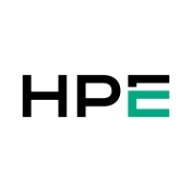

HPE Ezmeral Data Fabric and Cloudera Data Platform are prominent competitors in the big data solutions category. Cloudera has an edge with its scalability and flexibility, largely due to its robust open-source ecosystem support.
Features: HPE Ezmeral Data Fabric offers a robust multi-tenancy, security, and ease of configuration, enhanced by its bundled services. Its POSIX-compliant file system ensures high reliability and benefits distributed computing with NFS functionality. MapR-DB, a NoSQL data store, provides rapid data updates and supports diverse APIs. Cloudera Data Platform prioritizes scalability and flexibility with its open-source offerings and Ambari-driven management. It integrates well with a wide range of Hadoop ecosystem components, enhancing data processing capabilities and maintaining high availability. The integration with Ranger strengthens data access control and security.
Room for Improvement: HPE Ezmeral Data Fabric faces issues with interoperability and limited third-party tool support, affecting integration. It also needs enhancements in user-friendliness for easier deployment and improved upgrading processes to align with cloud readiness. Cloudera Data Platform needs better machine learning support, smoother cloud integration, and file system auditing and encryption usability improvements. Both platforms require better deployment speed and security features.
Ease of Deployment and Customer Service: HPE Ezmeral Data Fabric is mainly deployed on-premises, with users finding technical support reliable but sometimes slow. Cloudera Data Platform offers varied deployment options, including on-premises, private, and public clouds, and is praised for its flexibility in deployment environments. However, support could be faster. Post-acquisition, HPE has improved its support, addressing initial knowledge gaps.
Pricing and ROI: HPE Ezmeral Data Fabric provides flexible pricing models beneficial for existing customers but can be expensive for enterprises lacking skilled staff. Although users favor its usage-based pricing, determining ROI is challenging. Cloudera Data Platform, although pricier than older versions, remains cost-effective compared to other solutions. Its complex pricing model supports horizontal scaling but requires careful financial planning. Both platforms necessitate detailed use case evaluations to maximize returns, with Cloudera offering better cost transparency under negotiated licenses.
| Product | Market Share (%) |
|---|---|
| Cloudera Data Platform | 6.9% |
| Palantir Foundry | 21.8% |
| Informatica Intelligent Data Management Cloud (IDMC) | 12.7% |
| Other | 58.599999999999994% |
| Product | Market Share (%) |
|---|---|
| HPE Data Fabric | 14.6% |
| Cloudera Distribution for Hadoop | 19.1% |
| Apache Spark | 17.1% |
| Other | 49.199999999999996% |


| Company Size | Count |
|---|---|
| Small Business | 8 |
| Midsize Enterprise | 7 |
| Large Enterprise | 24 |
| Company Size | Count |
|---|---|
| Small Business | 4 |
| Large Enterprise | 7 |
Cloudera Data Platform offers a powerful fusion of Hadoop technology and user-centric tools, enabling seamless scalability and open-source flexibility. It supports large-scale data operations with tools like Ranger and Cloudera Data Science Workbench, offering efficient cluster management and containerization capabilities.
Designed to support extensive data needs, Cloudera Data Platform encompasses a comprehensive Hadoop stack, which includes HDFS, Hive, and Spark. Its integration with Ambari provides user-friendliness in management and configuration. Despite its strengths in scalability and security, Cloudera Data Platform requires enhancements in multi-tenant implementation, governance, and UI, while attribute-level encryption and better HDFS namenode support are also needed. Stability, especially regarding the Hue UI, financial costs, and disaster recovery are notable challenges. Additionally, integration with cloud storage and deployment methods could be more intuitive to enhance user experience, along with more effective support and community engagement.
What are the key features?Cloudera Data Platform is implemented extensively across industries like hospitality for data science activities, including managing historical data. Its adaptability extends to operational analytics for sectors like oil & gas, finance, and healthcare, often enhanced by Hortonworks Data Platform for data ingestion and analytics tasks.
Forward-leaning companies win market share because they leverage data more effectively than their competitors. Unlock the potential of your data assets with HPE Ezmeral Data Fabric (formerly MapR Data Platform). Empower your data science, analytics, and business teams by simplifying data management on a globally distributed scale. All with enterprise-grade reliability, security, and performance.
We monitor all Data Management Platforms (DMP) reviews to prevent fraudulent reviews and keep review quality high. We do not post reviews by company employees or direct competitors. We validate each review for authenticity via cross-reference with LinkedIn, and personal follow-up with the reviewer when necessary.